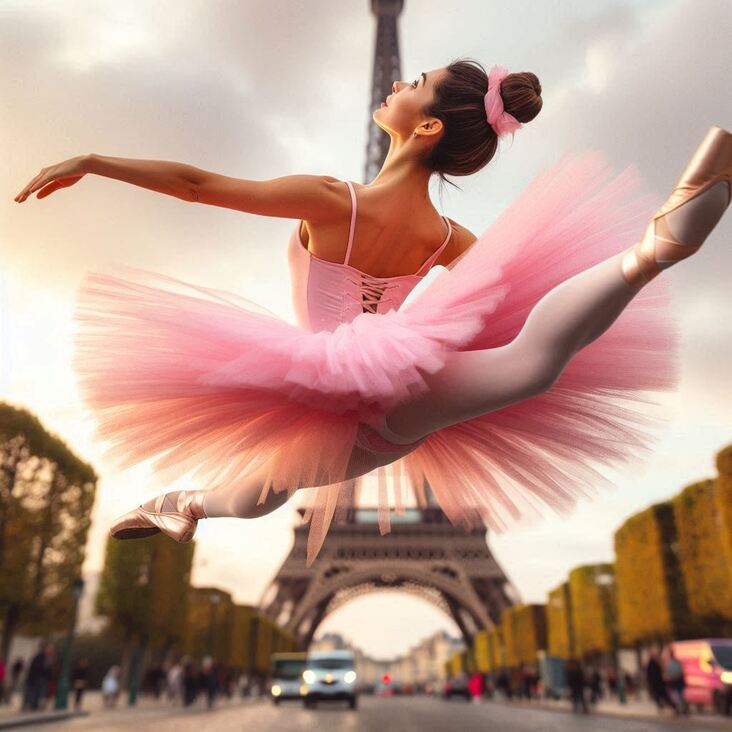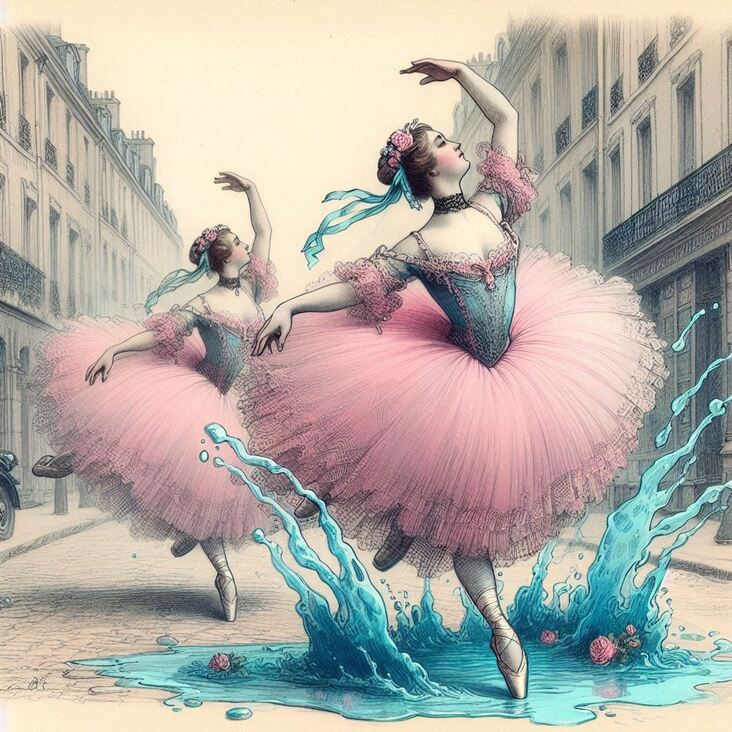
Greetings, darling dancers!
It’s your favourite pink-tutu clad time-traveller Emma here, and I’m so thrilled to welcome you to another month of pirouetting through history on www.pink-tutu.com! February flew by faster than a fouetté, and I've been simply bursting to tell you about my latest adventure – back to 1675, to be precise! Buckle up, darlings, because this one is a real hoot!
This month, Magic Meg (my utterly fabulous pink shimmering shire horse, with golden hooves and a mane like spun moonlight) whisked me away to the vibrant court of King Louis XIV in the year of our Lord, 1675! Can you imagine? It’s a world away from the contemporary ballet scene we know, but trust me, the spirit of dance was alive and well, and as ever, fashion was EVERYTHING.
Now, let’s just dive straight into the juicy bits. You wouldn’t believe the scene in Paris! The Palais Royal was abuzz, literally! It was as if a whirlwind of velvet, silks, and feather boas had just swept through the city, leaving a glorious trail of powdered wigs, elaborate ruffles, and oh, the jewels! Even the horses were bedecked in glittering bling.
It was during this era that ballet as we know it really started to blossom. The court of Louis XIV was known for its opulence and its dedication to the arts, and ballet was absolutely at the centre of it all. It wasn't quite the graceful, light, and expressive form we know today, but it was bold, theatrical, and full of pageantry. It was like a living, breathing fairytale.
Imagine: ladies, their dresses bursting with silk, adorned with lace and jewels, floating across the floor with delicate steps and intricate hand gestures. It’s not what you think of when you picture “ballet,” right? Yet, it was the beginning! A seed sown in the grand halls of Louis XIV's palace.
Naturally, a ballerina always appreciates a good outfit, and even in 1675, fashion was high on the agenda! We were talking high-waisted corseted bodices, fluffy skirts with tiers and ruffles (ahem, my favourite kind!) all embellished with jewels and ribbons. Think of it as a royal, dramatic precursor to a tutu. I managed to snag a stunning pink lace sleeve, an absolute treasure, to add to my ever-growing collection. You wouldn’t believe what it looks like against my new ballet costume! I can’t wait to show you.
But it’s not all about frocks and feather boas! It’s about the heart of dance. This period was all about “grand ballet.” It was serious business. We are talking structured, formalized movement, designed to highlight power, elegance, and control.
We know ballet is based on Italian dance forms, and the Italians came over to teach the French court the newest moves. It’s so fascinating seeing how the techniques evolved – less emphasis on jumps and pirouettes and more on the grandeur and grace of the steps, which the Italians then turned into ballet. I am so grateful to those early innovators, truly!
While in 1675 there wasn't a “ballet company” like we see today, there were professional dance groups – groups of skilled individuals with unique styles and talents. We have one extraordinary man to thank for that - Pierre Beauchamp! He was like the big daddy of dance – choreographer, dancer, teacher, you name it! It was Pierre who wrote "La Stéphanie," an absolute must-read if you're into ballet history. He detailed his ballet methodology – that's how they organized ballet steps, technique, and all things choreographic! The first "dance book" I found when time travelling – I keep it close to my heart. It sits on my dressing table and guides me.
You wouldn’t believe what a thrill it was to watch some of these incredible dancers perform, and I even got to watch "L'Amour Vainqueur" – that was one of Beauchamp's most famous creations! Just imagine all that drama! The ballet story went like this – Jupiter falls for a nymph – who wouldn't?– then this whole epic battle starts between love and war, the goddesses take part! All through beautifully structured steps! Honestly, you'd have to see it to believe it. But let me tell you, my heart was dancing with excitement.
You might be thinking: Emma, that's a far cry from the tutus and graceful leaps we're used to. But that’s the beauty of time travel, isn't it? It shows how a dance form we all love so much began and blossomed! We owe it to those brave souls, and every dancer before them. They laid the groundwork for all the stunning movements, amazing shows, and vibrant outfits we enjoy today! I have the deepest gratitude for them, really. They made everything possible.
On that note, I’ve just acquired the most wonderful pink velvet shoe, which used to belong to a famous dancer during this era! I found it in an old costume trunk tucked away in a Parisian attic! Imagine, this was worn in a Parisian ballroom! It's quite tattered now but I will add some embellishments for my collection – it’s just too much to resist.
One more thing: I went to a ballet-related auction and discovered a 1675 printed opera score! Opera was born in Italy and is the sister of ballet in so many ways. It's got the music, the drama, the spectacle, all combined in the one package! It's absolutely breathtaking! I was lucky enough to find it in a dusty attic in a small Parisian village – just a gorgeous relic. I plan to give it a new life in a place of honour, somewhere in my living room! It will look amazing against my newly painted pink walls, and the light will really show off the detail. It is divine.
So that, darlings, is a little peek into my latest ballet time travel escapade! You just can't beat a trip through history with Magic Meg by your side, especially when you are collecting beautiful pink-tutu relics for your dance-themed attic! Oh, and that Parisian baker made me the most gorgeous pink cake, topped with candied flowers and sprinkles! I may have accidentally lost my ballet shoe in the process of devouring it, but you know, life is a stage!
Until next month,
Keep those tutus pink and your hearts full of joy,
Emma
